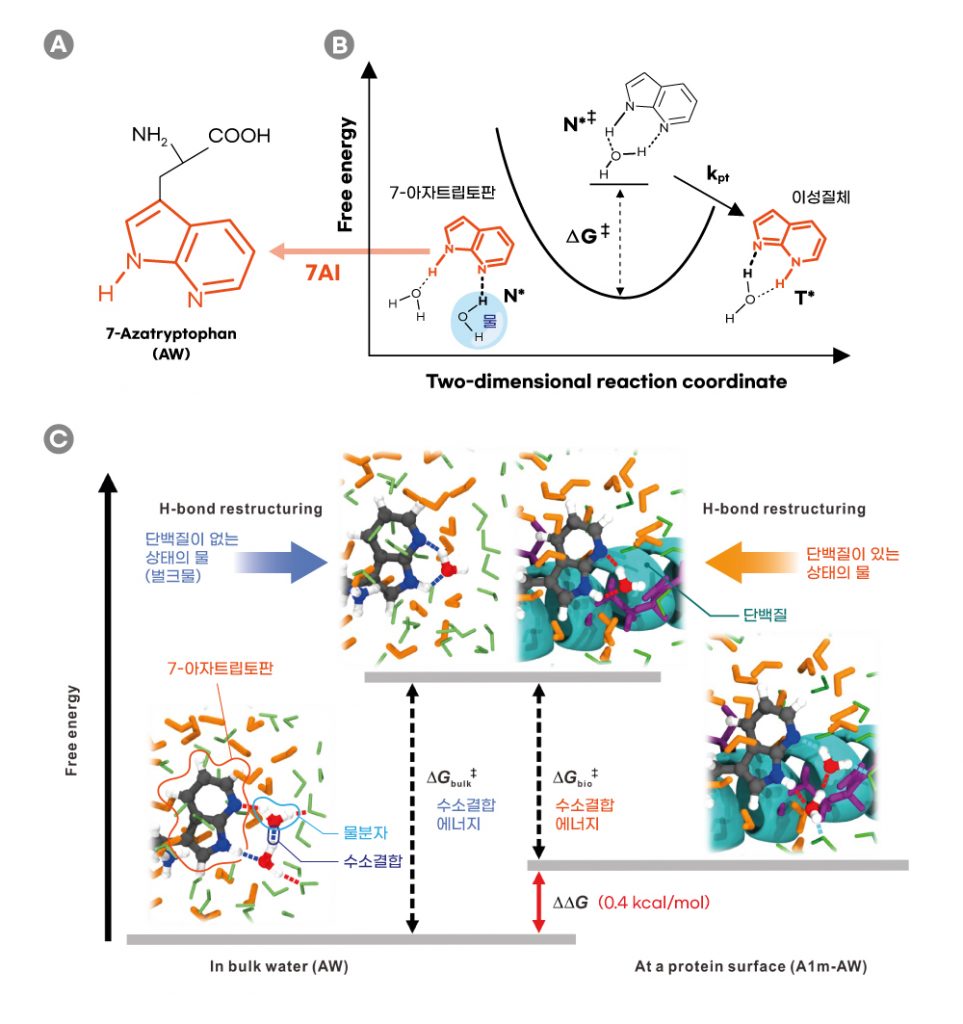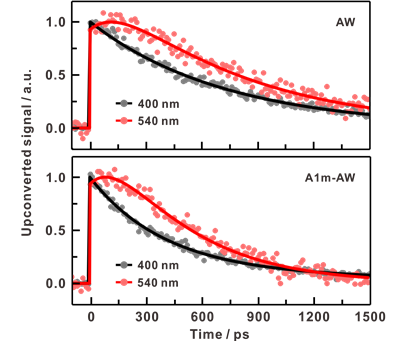Water, which makes up most of life, affects the structure and function of proteins in the body. Since substances such as enzymes and hormones that are responsible for biological functions are also proteins, knowing the properties of water in the body is very helpful in identifying the cause of disease and developing new drugs. Recently, technology has been announced to make this possible.
A joint research team, led by Professor Oh-Hoon Kwon in the School of Natural Sciences at UNIST has developed a method to analyze the "hydrogen binding energy" of biological water, using molecules that take hydrogen ions (H⁺, protons) from the surrounding water" when receiving laser light. Since it can measure the hydrogen binding energy of water around the protein, it is possible to understand how it affects changes in its structure and function. This research has been jointly conducted by Professor Kwak Sang-kyu (School of Energy and Chemical Engineering, UNIST), and Professor Tae-Hyeon Yoo (Department of Molecular Science and Technology, Ajou University).
Hydrogen bonds are chemical bonds created by the electrical attraction that appears around molecules that have been bonded to hydrogen. This bond plays an important role in determining the connection of water molecules or the structure of biopolymers. Hydrogen bonds are the forces acting between molecules, so they affect the structure of the biopolymer surrounded by water and change its function. Therefore, in order to understand the structure and function of biopolymers, it is important to know the hydrogen bonding energy of water at a specific location. However, biopolymers are

In order to understand the hydrogen binding energy of water molecules in a living body, the joint research team utilized a molecule (7-azatryptophan) that covets the hydrogen ions(H⁺) of water molecules when it is in an excited state by receiving light. . When this molecule takes away the hydrogen ions of a water molecule, the hydrogen bonds in the surrounding water are cut off and rearranged, and the reaction rate of the water molecule is deduced from the hydrogen bond energy. In the excited state, the substance called 7-azatryptophan takes hydrogen ions from neighboring water molecules and gives their hydrogen ions back to the water molecule. In this process, hydrogen bonds between water molecules are broken and then rearranged. The greater the strength of hydrogen bonds between water molecules, the slower the reaction takes because it takes longer to break the bond.

The researchers verified this by synthesizing an artificial protein using 7-azatryptophan. First, the reaction rate was determined using a spectroscopy method that measures the light emitted in the excited state of 7-azatryptophan in picoseconds. As a result, the hydrogen bonding energy of water around the protein was lower than the protein-free state. The water around the protein has a small hydrogen bond energy, so it is more easily broken. This was also consistent with the results calculated by computer simulation.
The findings of this research have been published in the prestigious, Angewandte Chemie International Edition on April 27, 2020. It has been also selected as 'Hot Paper' and 'Back Cover' of the journal. The research was conducted with the support of the Ministry of Science and ICT (MSIT), the National Research Foundation of Korea (NRF), the Institute for Basic Science (IBS), and the Ministry of Education.
Journal Reference
Won‐Woo Park, Kyung Min Lee, Dr. Byeong Sung Lee, et al., "Hydrogen‐Bond Free Energy of Local Biological Water," Angewandte Chemie, (2020).






